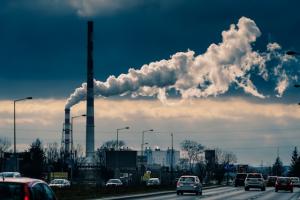While the world is gearing up for the summit of the future and the climate COP 29 to find solutions to global crises, another problem related to the planet we all share is often overlooked: air pollution. On International Day of Clean Air for blue skies, celebrated on 7 September every year, we need to speak up for clean air.
Air pollution has an enormous burden on public health, ecosystems, climate, and ultimately, the economy. Globally, the World Health Organization (WHO) estimates that a staggering 7 million deaths are caused by air pollution every single year.
More than 40 years on, the cooperation among Parties to the UNECE Convention on Long-range Transboundary Air Pollution (Air Convention) has led to remarkable results: significant emissions reductions (by 50-80% since 1990 in the Pan-European region and North America), 1 additional year of life expectancy, and 600,000 lives saved annually. Tackling some pollutants that are bad for air and climate at the same time, the Convention has also supported integrated approaches for clean air and climate action.
However, there are many more challenges still to be tackled to reduce air pollution in the region. A report in 2022 on the effectiveness of the Convention’s most recent protocol, the Protocol to Abate Acidification, Eutrophication and Ground-level Ozone or Gothenburg Protocol, showed that while emission reductions have been achieved, damage to human health, ecosystems and materials remains. Therefore, in 2023, Parties decided in a ground-breaking decision to revise the Gothenburg Protocol, which is expected to further strengthen efforts to reduce air pollution in the region.
Clean air is a life and money saver
The latest research on the cost of inaction on air pollution under the Convention has shown the importance of investing in clean air policies. The report shows that business as usual is not an option as it is up to 25 times more expensive than additional clean air policies. While the average cost of an optimal air pollution strategy is estimated to be 0.01–0.02 per cent of GDP, the current monetary damage cost to health, ecosystems and the economy due to ambient air pollution corresponds to over 5 per cent of GDP in nearly half (26) of 56 countries of the Pan-European region and North America. In at least 6 countries, the damage is more than 10 per cent of GDP. The largest part of the damage cost consists of reduced life expectancy, followed by morbidity costs (e.g., hospital admittance, sick leave, medicine costs), and damage to ecosystems.
This means that greater action on cleaner air pays off by saving lives and money. The revision of the Gothenburg Protocol is expected to deliver further concrete action to protect ecosystems and human health from air pollution and incentivize Governments in the region to further invest in clean air policies. It’s time to invest in #CleanAirNow.
Note to editors
About the Air Convention
The UNECE Convention on Long-range Transboundary Air Pollution was adopted in 1979. Over the years, it has been extended by eight protocols that identify specific measures to be taken by Parties to cut their emissions of air pollutants. The Convention has 51 Parties, covering North America and almost the entire European continent.
